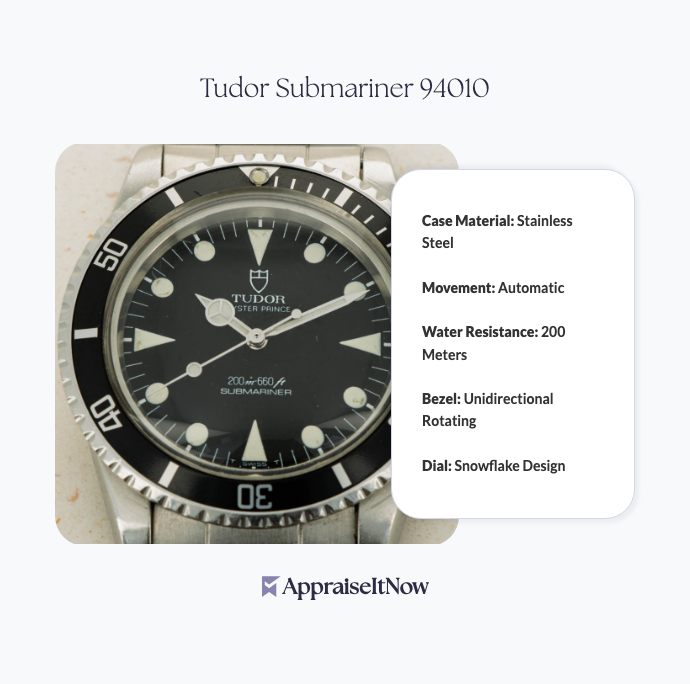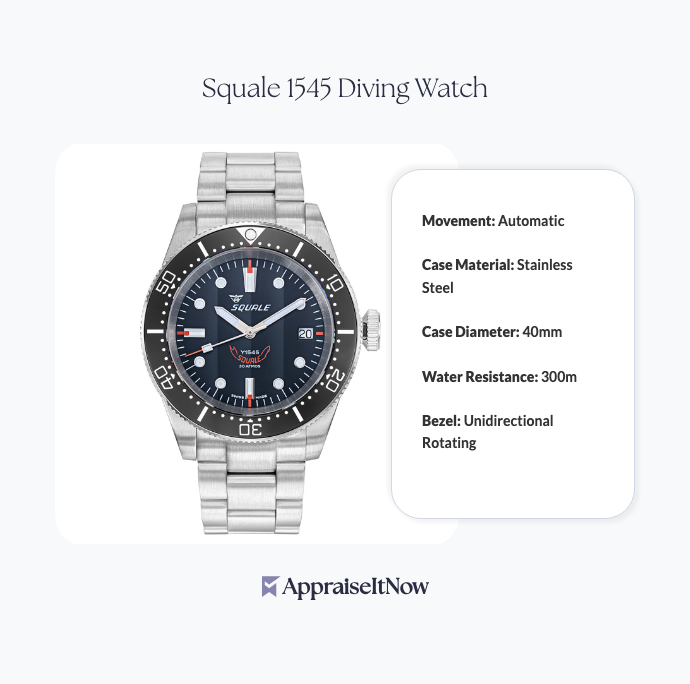<h1>How to Get Your IWC Pilot Mark XI RAF Appraised</h1>
<p>The IWC Pilot Mark XI RAF is one of the most coveted vintage military watches in the collector's market, with values ranging from <strong>$12,000 to $18,000</strong> depending on condition, provenance, and originality. If you own one of these iconic timepieces or are considering acquiring one, understanding the appraisal process and what drives its value ensures you're making informed decisions about your investment.</p>
<h2>Understanding Your IWC Pilot Mark XI RAF</h2>
<p>Your IWC Pilot Mark XI RAF represents a remarkable piece of horological and military history. Originally commissioned by the British Royal Air Force in the 1940s, this watch was first introduced in <strong>1948</strong> as a purpose-built instrument for RAF pilots. The manual-winding mechanical movement, luminous dial with Arabic numerals, and robust stainless steel case were engineered specifically for the demanding conditions of military aviation—where readability in darkness, durability under stress, and mechanical reliability weren't luxury features but operational necessities.</p>
<p>What makes your watch particularly valuable today is its combination of historical significance, timeless design, and the craftsmanship that exemplifies IWC's legacy as a precision instrument manufacturer. The watch was produced in limited quantities, making each example increasingly rare as decades pass. Understanding these foundational aspects helps contextualize why professional <a href="/blog/what-you-need-to-know-about-rare-watch-appraisals">appraisal services for collectibles</a> are essential for accurate valuation.</p>
<div class="callout tip"><p><strong>Collector's Insight</strong></p>
<p>RAF provenance and documented military service records can increase your watch's value by 15-25% compared to civilian examples without such documentation.</p></div>
<h2>Key Factors That Define Your Watch's Value</h2>
<h3>Authenticity and Serial Numbers</h3>
<p>Establishing authenticity is the critical first step in any professional appraisal. Your IWC Pilot Mark XI RAF carries specific hallmarks and serial numbers that certified appraisers use to verify its legitimacy. The watch features distinctive movement calibers, case construction details, and dial configurations that changed subtly over production years. Serial numbers on the case back, movement plate, and dial all tell a story about when your specific watch was manufactured and where it may have been distributed.</p>
<p>One of the primary concerns collectors face when acquiring vintage military watches involves verifying these authentication markers. Did your watch go through multiple military service cycles? Does it retain its original movement caliber, or has it been replaced over time? These questions directly impact valuation, which is why specialized expertise in <a href="/blog/appraising-luxury-watches-determining-the-value-of-timepiece-investments">vintage luxury watch appraisals</a> becomes invaluable.</p>
<h3>Condition Assessment and Impact on Value</h3>
<p>Condition dramatically influences where your specific watch falls within the $12,000-$18,000 range. Professional appraisers examine several discrete components when assessing a Pilot Mark XI RAF:</p>
<p>The <strong>dial</strong> represents one of the most critical condition factors. Original dials with crisp Arabic numerals, even with minor patina from decades of service, typically command higher values than refinished examples. Luminous material on the hands and numerals naturally degrades over time, creating a distinctive warm glow that sophisticated collectors recognize as authentic aging rather than deterioration.</p>
<p>The <strong>movement condition</strong> directly affects both mechanical function and value. A manual-winding caliber that's never been serviced may show signs of aging—slight wear on gear teeth, patina on steel components, or gummed lubricants—yet these characteristics often increase authenticity appeal rather than diminish value. Conversely, movements that have been disassembled and carelessly serviced may have replacement parts that significantly reduce collector value, even if the watch functions perfectly.</p>
<p>The <strong>case and crystal</strong> tell their own story. Original stainless steel cases develop a natural patina over decades, and collectors often prefer this authentic aging to polished restoration work. The original Plexiglass crystal may show scratches or slight haziness from years of wear, yet replacing it with a modern sapphire crystal, while functionally superior, marks the watch as modified and reduces value substantially.</p>
<div class="callout note"><p><strong>Appraisal Factor</strong></p>
<p>Even minor replacement parts like hands or dial refinishing can reduce value by 20-30%, making originality one of the most influential valuation drivers for vintage military watches.</p></div>
<h3>RAF Provenance and Military Markings</h3>
<p>Military documentation proves invaluable in your appraisal. RAF broad arrows, Air Ministry markings, and service numbers on the case back or dial provide direct links to military service history. These markings effectively authenticate that your watch actually served its intended purpose rather than being a civilian purchase mistaken for a military issue.</p>
<p>The distinction matters significantly. Civilian IWC Pilot watches from the same era may appear superficially similar but lack specific military serial number formats, proof marks, or markings that indicate service issue. Your watch's provenance—whether accompanied by original paperwork, military service records, or documented ownership history—can differentiate between a $12,000 example and one valued at $18,000.</p>
<h2>What Recent Market Data Shows</h2>
<p>The vintage military watch market has experienced sustained appreciation. During the past 5-10 years, comparable IWC Pilot Mark XI RAF watches have demonstrated resilience despite broader economic fluctuations. Sales data indicates that well-documented examples with strong provenance tend to outperform those without clear history, reflecting collector preference for authenticated military heritage.</p>
<p>Private sales and specialized auction houses focused on <a href="/types/memorabilia-and-collectibles">military memorabilia</a> consistently show that documentation drives final hammer prices. A 1950s RAF-issued Pilot Mark XI in excellent condition with verifiable service records may achieve prices at the upper end of the valuation range, while a similar watch without such documentation might settle at the $12,000-$14,000 level.</p>
<p>The current market for military-issue vintage watches reflects several dynamics: decreasing supply as existing pieces remain in collections rather than entering resale, growing international collector interest from both the UK and continental Europe, and increasing recognition of watches as legitimate alternative investments alongside traditional collectibles.</p>
<h2>The Documentation Difference</h2>
<p>Professional appraisers understand that documentation directly impacts both valuation accuracy and market appeal. Your IWC Pilot Mark XI RAF's value increases substantially when accompanied by:</p>
<p>Original papers or guarantees, even if fragmented, provide manufacturing details and confirm distribution channels. <strong>Military service records</strong>, if accessible through military archives or family documentation, establish definitively that your watch saw operational use. <strong>Detailed ownership history</strong> traced through successive owners adds confidence for future collectors evaluating authenticity. <strong>Contemporary photographs</strong> showing your watch in military service—perhaps with a pilot who owned it or during documented operations—create compelling narrative provenance that resonates with collectors.</p>
<p>The absence of such documentation doesn't necessarily reduce your watch's value catastrophically, but it does require more rigorous technical analysis during appraisal to establish authenticity and condition. This is why professional appraisers emphasize that documentation becomes increasingly valuable as time passes and oral histories fade.</p>
<div class="callout tip"><p><strong>Documentation Value</strong></p>
<p>Original box, papers, and service records can account for 15-20% of total valuation, making these items worth preserving even if they appear worn or incomplete.</p></div>
<h2>Regional Market Variations and Where to Sell</h2>
<p>Your IWC Pilot Mark XI RAF's value isn't entirely uniform across global markets. In the <strong>United Kingdom</strong>, where RAF heritage carries particular cultural resonance, well-documented military examples often command premium prices. European collectors, particularly in Switzerland and Germany, value the technical excellence and manufacturing heritage differently than U.S. collectors, who often emphasize rarity and investment potential more heavily.</p>
<p>The <strong>American market</strong> has developed a robust collector base for vintage military watches, driven partly by growing interest in military history and alternative investments. However, import considerations and the prevalence of civilian Pilot watches in circulation mean documentation of military issue becomes even more critical for U.S. buyers seeking authentic RAF examples.</p>
<p>Asian collectors, especially in Japan and Hong Kong, have developed sophisticated appreciation for vintage Swiss watches, and IWC specifically benefits from strong regional demand. This geographic diversity means your appraisal should consider multiple potential buyer bases when establishing fair market value for insurance or sale purposes.</p>
<h2>Why Professional Appraisal Matters</h2>
<p>Attempting self-valuation using online comparables or auction house estimates without professional expertise creates several risks. First, you may misidentify subtle authentication markers that distinguish genuine RAF-issue Pilot Mark XI watches from civilian variants or later reproductions. Second, condition assessment requires hands-on examination by specialists who understand how different types of wear and aging patterns affect market values within your specific watch's segment.</p>
<p>A certified appraiser experienced in <a href="/blog/appraising-luxury-watches-determining-the-value-of-timepiece-investments">luxury watch valuations</a> brings standardized methodology and market knowledge that ensures your appraisal is defensible for insurance claims, estate planning, or potential legal proceedings. These professionals understand authentication protocols, can identify movement calibers and their significance, evaluate condition using established standards, and access comparable sales data that forms the foundation of credible valuation.</p>
<p>When you work with <strong>AppraiseItNow</strong>, you're accessing a network of credentialed appraisers holding certifications from recognized organizations like <strong>AAA, ISA, ASA, CAGA, and AMEA</strong>. These professionals deliver <strong>USPAP-compliant appraisals</strong>—meaning they follow the Uniform Standards of Professional Appraisal Practice—ensuring your documentation meets requirements for insurance coverage, estate settlement, or any formal valuation purpose.</p>
<div class="callout note"><p><strong>Key Takeaway</strong></p>
<p>A certified IWC Pilot Mark XI RAF appraisal provides defensible valuation documentation, authentication verification, and market positioning that protects your investment and clarifies your watch's true worth whether you're buying, selling, or insuring this iconic military timepiece.</p></div>







.avif)







